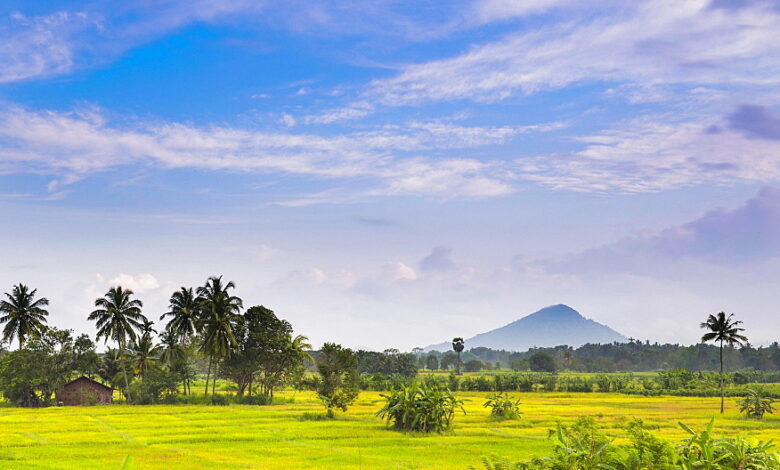Rediscovering Nutritional Richness: Sri Lanka’s Traditional Rice Varieties

The Great Barn of the East
Rice is the staple in many households in south and east asia, it has been so for thousands of years and in Sri lanka too, rice cultivation has been a central part of the culture throughout its history.
The ancient kings of Sri lanka always took measures to increase the country’s rice production and make it self sufficient. During the reign of king Parakramabahu Sri Lanka is believed to have been called the “ Great Barn of the East” as it had been among the foremost paddy exporters in the world.
A Nutrient-Dense Powerhouse
Sri Lankan traditional rice varieties like Rathu Heenati, Pragathi Wee, and Weda Heenati are hidden nutritional powerhouses. Unlike many modern rice varieties that have been selectively bred for yield at the expense of nutrient content, these traditional grains retain high levels of essential minerals.
For example, Rathu Heenati boasts impressive concentrations of Sodium (Na), Potassium (K), Magnesium (Mg), Calcium (Ca), and Phosphorus (P). These minerals are crucial for maintaining healthy bodily functions, from supporting bone health to regulating metabolic processes.
Selenium: The Antioxidant Boost
One standout feature of Sri Lankan traditional rice is its remarkably high selenium content. Selenium is a vital trace element with potent antioxidant properties, protecting cells from damage and supporting immune function. Varieties like Rathu Heenati, Pragathi Wee, and Weda Heenati contain selenium levels above 250 μg L⁻¹ DM, significantly higher than many other rice types. Given that selenium is often deficient in over a billion people worldwide, incorporating these traditional rice varieties can provide a valuable boost to your health, helping to fend off chronic diseases.
Naturally Safer Consumption
In today’s health-conscious world, the safety of the food we consume is paramount. Sri Lankan traditional rice varieties excel in this regard, containing significantly lower levels of toxic elements such as Arsenic (As), Cadmium (Cd), Lead (Pb), and Chromium (Cr). These elements, found in worrying concentrations in some modern rice varieties, pose serious health risks if consumed in large quantities over time.
The traditional cultivation methods used for Sri Lankan rice, using synthetic agrochemicals, contribute to their safer profiles, ensuring the wholesomeness of these rice varieties.
Sustainable and Eco-Friendly Agriculture
Sri Lankan traditional rice varieties are often grown using age-old agricultural practices that are in harmony with nature. These methods use minimal synthetic fertilizers and pesticides, preserving the natural integrity of the rice and supporting biodiversity.
This sustainable approach not only maintains the nutritional value of the rice but also promotes environmental health. By choosing these traditionally grown varieties, you’re supporting agricultural practices that are kinder to the planet.
A Rich Heritage of Flavor
Beyond their nutritional benefits, Sri Lankan traditional rice varieties are celebrated for their rich, distinctive flavors. These grains have been perfected over millennia, offering a taste that is both deeply satisfying and unique.
Whether you’re cooking a simple meal or a gourmet dish, the unique flavors and textures of traditional Sri Lankan rice can elevate your culinary experience, giving you a deeper insight into the heart of Sri Lankan culture.
Antioxidant and Immune Support
The high selenium content in these rice varieties not only contributes to their antioxidant properties but also plays a critical role in boosting the immune system. Antioxidants help protect the body against oxidative stress, a contributor to chronic conditions such as cancer and heart disease.Studies have found that including selenium-rich rice in your diet can support long-term health and enhance your body’s defense mechanisms.
Balanced Nutrient Intake
Incorporating Sri Lankan traditional rice into your diet means gaining access to a balanced intake of essential nutrients. Iron, zinc, manganese, and magnesium are just a few of the critical elements that these rice varieties provide in ample amounts. These nutrients are vital for numerous bodily functions, from oxygen transport and immune response to enzyme activation and energy production.
A Health-Conscious Choice
In a market flooded with options, choosing Sri Lankan traditional rice varieties means opting for a product that offers both superior nutritional benefits and safety. These rice varieties cater to the growing consumer demand for foods that are not only healthy but also sustainably produced and environmentally friendly. By including these traditional grains in your diet, you’re making a choice that supports your health and the health of the planet.
Supporting Biodiversity and Heritage
By purchasing Sri Lankan traditional rice, you’re also supporting the preservation of agricultural biodiversity and cultural heritage. These rice varieties have been nurtured and cherished by generations of farmers, and your choice helps keep this legacy alive.
Sri Lankan traditional rice varieties offer a wealth of nutritional benefits, superior safety due to low toxic element content, and support sustainable farming practices.
By choosing these exceptional grains, you are embracing a healthier lifestyle and contributing to the preservation of ancient agricultural traditions. Rediscover the flavors, health benefits, and cultural significance of Sri Lankan traditional rice and make them a staple in your kitchen.
References
Kodikara, C., et al. (2023). “Comparison of nutritional and trace element concentrations in some Sri Lankan traditional rice varieties.” International Journal of Food Science and Technology, 58(6), 5168-5182.
Hänsch, R., & Mendel, R. R. (2009). “Rice: A Source of Essential Minerals.” Journal of Food Science, 74(2), S1-S8.
Bandara, J. M. R. S., et al. (2008). “Chronic Kidney Disease of Uncertain Etiology (CKDu) in Sri Lanka: A Review.” Journal of Nephrology, 21(4), 531-538.
Polizzotto, M. L., et al. (2013). “Arsenic and Cadmium in Rice: A Review of the Health Risks.” Journal of Environmental Health, 76(4), 14-21.
Balali-Mood, M., et al. (2021). “Lead Exposure and Neurological Damage.” Journal of Environmental Health, 84(2), 14-21.




